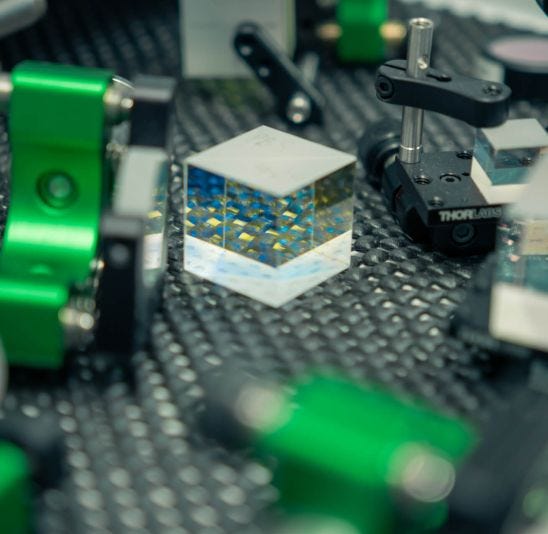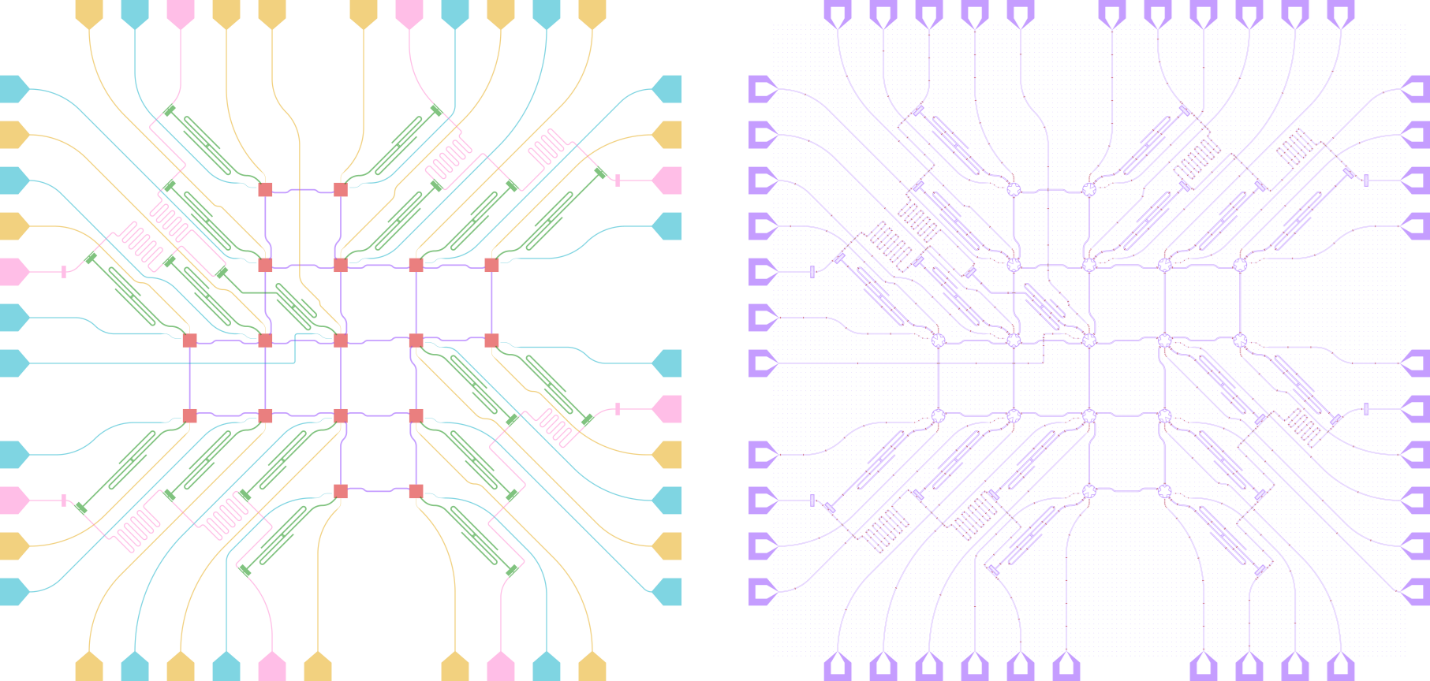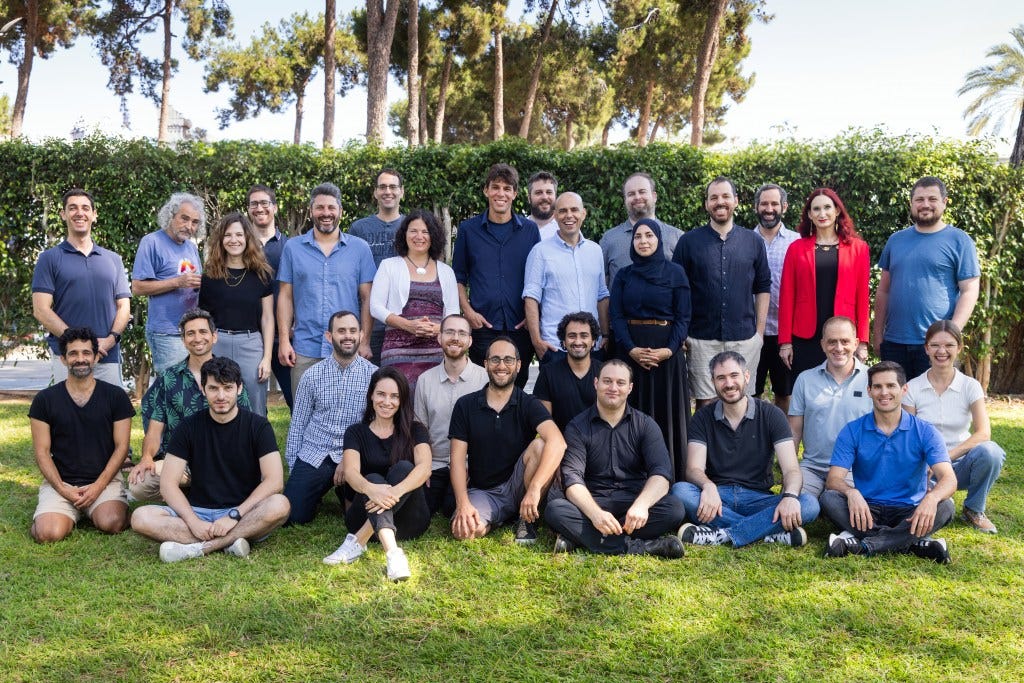Europe goes Quantum...ish, Piast-Q, Groove, Qedma, Pasqal - The Week in Quantum Computing – July 7th 2025
Issue #243
Quick Recap
This week saw significant investment and strategic momentum in quantum technologies across Europe and beyond. The European Commission unveiled a new strategy aiming to position Europe as a global quantum leader by 2030, leveraging over €1 billion from the Quantum Technologies Flagship, and supporting startups and industrial ecosystems. Within this framework, the EuroHPC Joint Undertaking inaugurated PIAST-Q, Poland's first 20-qubit trapped-ion quantum computer, marking the beginning of a European deployment of eight quantum systems using six technologies, and aligning with the region’s coordinated, pluralistic approach. On the VC front, Delft-based Groove Quantum secured €10 million—including €2.5 million from the EIC Accelerator—for its scalable germanium qubit technology. In Israel, Qedma closed a $26 million Series A, with IBM among backers, to advance its error-mitigation software QESEM. Meanwhile, Pasqal acquired Canadian photonics company AEPONYX to embed advanced chip technology into its neutral-atom processors, targeting enhanced scalability and robustness. On the research and technology front, the University of Oxford reported a major milestone: a single qubit with an error rate as low as 1 in 6.7 million, a crucial advance towards fault-tolerant quantum computing. Quantinuum introduced the Quantum Paldus Transform (QPT), a new algorithmic tool designed to optimize quantum simulations in chemistry and materials science by leveraging physical symmetries, while AWS’s Center for Quantum Computing released DeviceLayout.jl, an open-source tool to enable scalable, programmatic design of quantum integrated circuits. QED-C continued to strengthen the ecosystem through its Quantum Business Edge™ platform, with upcoming events on IP rights and strategic partnerships.
The Week in Quantum Computing
Poland Hosts Inaugural European Quantum Computer, Boosting EU Tech Ambitions
On June 27, 2025, the EuroHPC Joint Undertaking (EuroHPC JU) inaugurated PIAST-Q, a 20-qubit trapped-ion quantum computer, at the Pozna Supercomputing and Networking Center (PCSS) in Pozna, Poland. This marks Poland’s first quantum computer and the first in a European initiative to deploy eight quantum systems using six distinct technologies. PIAST-Q, built with Alpine Quantum Technologies’ (AQT) technology, features all-to-all qubit connectivity to simplify quantum algorithm implementation and is integrated with Europe’s supercomputing and research networks. The project underscores a coordinated European strategy to diversify quantum hardware and foster synergies with the continent’s thirteen AI factories. Europe’s approach embraces technological plurality, aiming to accelerate scientific innovation and reduce risks in the rapidly evolving quantum field.
The Clock Is Ticking: Key Takeaways from the EU’s New Post-Quantum Cryptography Roadmap
The EU has launched a coordinated roadmap to transition to post-quantum cryptography (PQC), urging Member States to act now to protect critical digital infrastructure from future quantum threats. With high-risk sectors like energy and telecoms expected to complete upgrades by 2030, and national roadmaps and pilot projects due by 2026, the EU emphasizes urgency, visibility, and crypto-agility. Organizations must inventory their cryptographic assets, prioritize high-risk use cases, and adopt hybrid solutions that blend traditional and quantum-safe algorithms. Regulatory pressure is mounting under laws like NIS2 and DORA, making executive accountability and supply chain alignment key. Keyfactor supports this shift by offering tools for cryptographic discovery, automation, and agile crypto management, enabling a proactive approach to securing Europe’s digital future.
Quantum Business Edge
QED-C’s Quantum Business Edge™ initiative, an educational platform for quantum industry professionals, focuses on bridging high-tech business practices and real-world quantum challenges in 2025. QBE provides startups, scale-ups, and research institutions with tailored resources, including expert-driven webinars, interactive meetups, and a curated resource library on topics like IP protection, strategic partnerships, technology descriptions, and value propositions. Notable upcoming events include sessions on IP rights (July 22, 2025) and strategic partnerships (July 24, 2025). By equipping members with practical business strategies and networking opportunities, QED-C aims to accelerate the commercialization and scalability of quantum innovations, signaling a commitment to developing a robust ecosystem for quantum business growth this year.
Pasqal Acquires Photonics Innovator AEPONYX to Accelerate the Race to Fault-Tolerant Quantum Computing
On June 3, 2025, Pasqal announced the acquisition of Canadian photonic integrated circuit innovator AEPONYX. AEPONYX’s PICs, designed for precise light control and manipulation, will be embedded into Pasqal’s processors to enhance accuracy, robustness, and scalability in qubit control. Pasqal CEO Loïc Henriet stated this integration addresses "scalability, advanced individual control of qubits, and hardware stability," key steps toward fault-tolerant quantum computing. AEPONYX CEO Philippe Babin asserted that their photonics "will help power" the move from “proof-of-concept to real, usable processors.” With this strategic move, Pasqal aims to accelerate the transition to enterprise-ready, fault-tolerant quantum systems in 2025.
Quantum’s quandary: racing toward reality or stuck in hyperbole?
Despite flashy announcements from tech giants like Google, Microsoft, and Amazon, practical quantum computing remains distant and uncertain. Owen Rogers of Uptime Institute argues that progress is slow, and the hype often outpaces reality, driven by funding needs, corporate branding, and competitive pressure. Recent breakthroughs boast impressive benchmarks and error-reduction techniques, but most lack peer review, practical relevance, or reproducibility. The core challenge—scaling error-free qubits—remains unresolved. While government and institutional interest is growing, experts still believe a usable quantum computer is at least a decade away, just as they did years ago. In short, quantum computing is still more promise than product.
Oxford’s One-in-6.7-Million Qubit Leap Could Redefine Quantum Computing
Researchers at the University of Oxford have achieved a significant breakthrough by demonstrating a qubit with an error rate as low as 1 in 6.7 million. This advance, claimed by the Oxford team, marks "a fundamental milestone" for fault-tolerant quantum computing, a persistent barrier in the field. The achievement reportedly surpasses previous records for single-qubit reliability and suggests that reliable large-scale quantum computers may be more feasible than previously thought. In a year marked by ongoing skepticism over practical quantum error correction, this development directly addresses one of quantum computing’s critical technical hurdles, reflecting a notable step forward for both university research and the broader quantum community in 2025.
Design quantum integrated circuits with open-source software DeviceLayout.jl from AWS
On July 1, 2025, the AWS Center for Quantum Computing announced the open-source release of DeviceLayout.jl, a Julia-based software package for CAD of quantum integrated circuits. Designed to accelerate scalable and collaborative chip design, DeviceLayout.jl supports schematic-driven workflows for processors such as a demonstrated 17-qubit transmon device, referencing published ETH Zurich layouts. The tool integrates with Palace, AWS’s open-source electromagnetic finite-element analysis platform, streamlining chip-to-simulation workflows. Components, specifications, and layouts are managed programmatically and reproducibly, aided by Julia’s package manager. This release provides the open quantum hardware community new means for efficient, version-controlled, and collaborative device development—an important step as experimental processors scale to tens of qubits and design complexity rises.
Commission launches strategy to make Europe Quantum leader by 2030
The European Commission has launched a new strategy aiming to position Europe as a global leader in quantum technologies by 2030. This initiative will leverage over €1 billion of investments from the Quantum Technologies Flagship, alongside national and private funding. The strategy outlines actions to coordinate research, foster industrial ecosystems, develop quantum skills, and address security challenges. The plan emphasizes collaboration among EU Member States and support for startups and industry, aiming to bridge the gap between research and commercial applications. With this coordinated approach and substantial funding, the Commission signals its commitment to advancing the entire European quantum value chain in 2025 and beyond.
Dutch-based Groove Quantum lands €10M in EIC Funding
Delft-based Groove Quantum, founded in 2024 by Anne-Marije Zwerver and Nico Hendrickx, has secured €10M in funding—including a €2.5M grant—from the European Innovation Council Accelerator programme. Selected from 1,000 applicants as one of 40 deeptech startups backed in Europe, Groove was recognized for its germanium qubits, described by the EIC jury as “a standout in a crowded field.” Their technology leverages transistor-based germanium qubits compatible with industry semiconductor manufacturing, aiming to scale quantum computers to millions of qubits for applications in security, medicine, and materials research. With nearly €230M distributed to 40 companies, this EIC Accelerator round marks significant momentum for scalable quantum hardware approaches in 2025.
Israeli quantum startup Qedma just raised $26M, with IBM joining in
Israeli quantum software startup Qedma has raised $26 million in a Series A funding round led by Glilot Capital Partners, with participation from IBM and Korea Investment Partners. Unlike most quantum players focusing on hardware, Qedma develops error-mitigation software—QESEM—that suppresses and mitigates noise-induced errors in quantum circuits, purportedly enabling circuits “up to 1,000 times larger” to run accurately on current quantum hardware, as stated by co-founder Prof. Dorit Aharonov. CEO Asif Sinay claims, “It’s possible that already within this year, we’ll be able to demonstrate with confidence that the quantum advantage is here.” Qedma’s software is hardware-agnostic, already demoed on IonQ’s Aria and available via IBM’s Qiskit Functions Catalog, reflecting ongoing industry efforts to address quantum error correction and demonstrate real-world quantum advantage in 2025.
We’re taking a transformational approach to quantum computing
On July 3, 2025, Quantinuum announced a new quantum algorithmic technique called the Quantum Paldus Transform (QPT), developed by Dr. Nathan Fitzpatrick and Mr. Jędrzej Burkat. The QPT is designed to increase efficiency in quantum simulations by transforming complex problem representations into simpler forms, reducing quantum resource requirements. According to a newly published paper, the QPT leverages the fundamental role of symmetry in physics, with direct relevance for simulations in quantum chemistry, materials science, and semiconductor physics. This innovation stems from foundational concepts such as Noether’s theorem on symmetry and conservation laws, as well as the Pauli exclusion principle. Quantinuum positions the QPT as a step towards optimizing quantum algorithm performance for practical scientific applications.
Software abstraction: The missing link in commercially viable quantum computing
Data Center Dynamics discusses the challenge of bridging hardware advances and practical applications in quantum computing, emphasizing the lack of robust software abstraction layers as a critical obstacle in 2025. While quantum hardware from various vendors is progressing, the software stack remains fragmented and immature, limiting interoperability and scalability. The article stresses that without comprehensive software abstraction, businesses cannot fully leverage quantum advantages for commercial workloads.
Mapping Israeli quantum computing: $650 million raised as global race intensifies
A new map from Earth & Beyond Ventures and Deloitte Catalyst identifies nine core quantum computing startups in Israel, together raising about $650 million to date, including over $300 million in 2025. Major rounds include $170 million for Quantum Machines and $110 million for Classiq. The sector, though small compared to multibillion-dollar efforts in the US and China, is buoyed by strong private capital and a $27 million Israeli government program to build the IQCC. Around 15 other Israeli startups target quantum sensing, communication, and advanced materials. Amit Harel of Deloitte Catalyst notes state-level investments are returning to relevance. According to Noga Yaari of Earth & Beyond Ventures, quantum is "moving from the lab to industry," marking a pivotal shift for early investors and startups alike.






